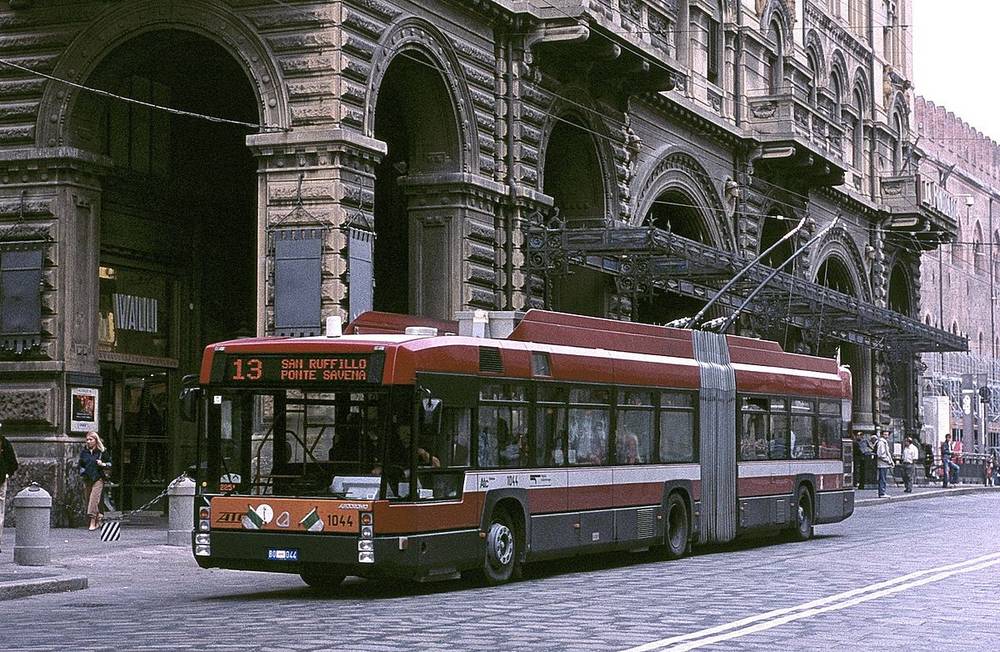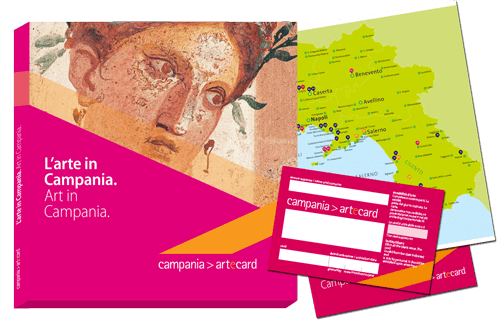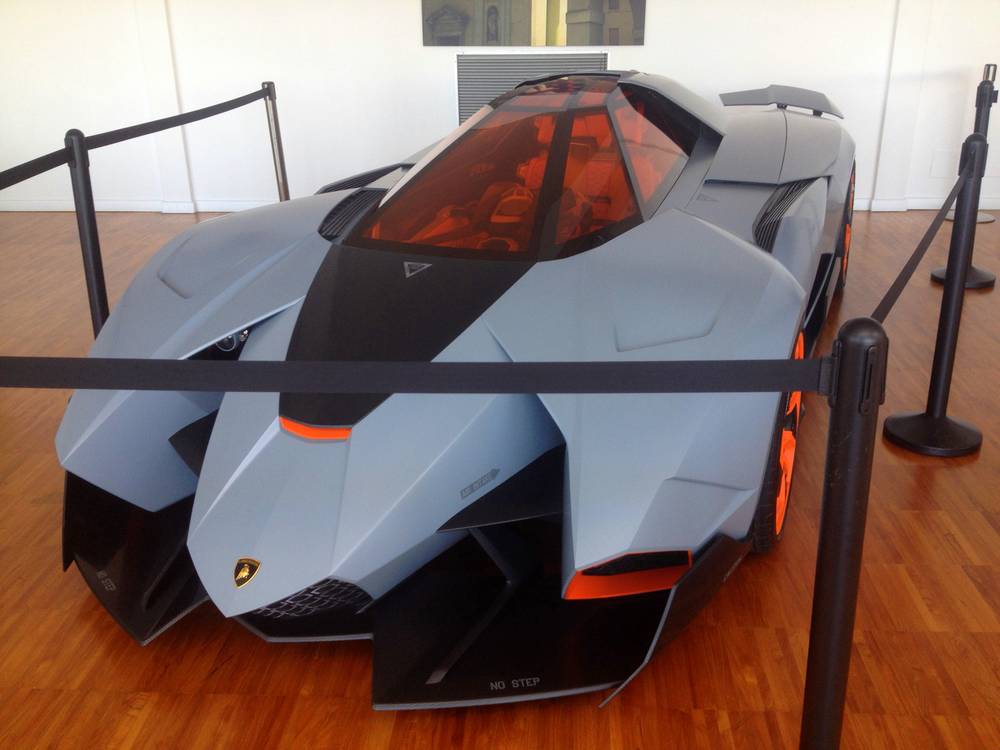We spent three weeks in Italy enjoying some of the country’s offbeat sights. Here’s some things we learned along the way to help you enjoy your trip.
Italian buses are weird.
By Steve Morgan – Own work, CC BY-SA 3.0
Bologna has excellent bus directions on Google maps, and bus tickets are decently priced at 1.50 €. The red machines are located near the front of the bus – the catch is that only accept coins, and don’t give change. Any change gets turned into credit for the next person – if you need two or more tickets, feel free to use that to your advantage. Most (but not every bus) has these automated machines onboard – look for the green signs near where you get on.
With most Italian cities, the tobacco stands on sidewalks and along major streets can sell you bus tickets – and they commonly seemed to act like they were doing us a favor.
Buses in Rome are almost too much a hassle and waste of time since they don’t run through the central walkable areas of town or major stops. All things being equal, I’d take a subway in Rome (while crowded, it was more straightforward).
5 essential things to do in Rome – go travel mindfully.
Watch for scams and people trying to ‘help’
Watch for ‘helpful’ porters on the train platform – for a mere 3€, they’ll help carry your stuff down the stairs from the train platform, possibly into the trunk of a waiting taxi. Never mind the fact that there are elevators and escalators in most of them. Ignore them.
Italy (especially Rome) has no shortage of folks out to take advantage of tourists’ lack of knowledge. This isn’t surprising, but it’s certainly something to keep in mind.
The local universities are great places for non-touristy grub
If you’re traveling through Bologna, make your way through the University of Bologna. Get the cafe experience on the university grounds, or head to Marranzano’s for Sicilian food. Pizza (2€), cariocciaia (3€) and panini (3.50€) are all around. Beyond being student pricing, they’re used to tourists but not overwhelmed by them. (Above is what happens when you take two pizza slices and smash them together for ease of carrying.)
In some of these settings, there seems no line between ‘university campus and ‘surrounding town’. History without restoration is along the covered corridors and buildings, even if they’re not the more famous things you came to see.
You can actually pick up a neon-colored ‘David’… but please don’t.
Egad. It may not be the tackiest souvenir I’ve ever seen, but it’s close.
Watch for seating fees, service fees, charges for bread and tableware…
As in many other countries, the farther away from a tourist site you eat, the less likely you are to be ripped off. These charges aren’t technically rip-offs, but unexpected fees and charges add up all the same. If your check is little more than a number of euros you’re expected to pay, ask for an itemized bill by saying il conto dettagliato or il conto lungo.
What I’m calling a ‘seating fee’ is basically the difference between take-out (or standing-up) service and sit-down service. While I didn’t see this often (partially because we didn’t visit lots of places that tried to pull this off), banco is the price you’ll pay for your coffee and snacks if you stand at the bar, while tavolo is what you’ll pay if you’re sitting.
Pane e coperto (literally, bread and tableware) is another of those less-than-obvious things. It’s supposed to be written in the menu, and may appear in small print or on the back page. It’s rarely more than 2-3 euros a person, and if it’s not there it’s a bit more acceptable to make a fuss over it. (This sort of charge may officially be against the law in some parts of the country, but like too many other things in Italy, few seem inclined to follow a rule that’s not being enforced.)
Servizio (service) can be 10-20% on top of the bill, and is essentially the restaurant adding a tip to the bill. This (probably) isn’t worth making problems about, unless of course the service was horrendous and doesn’t deserve the automatic 20% they’d like to give themselves.
And then there are tourist taxes…
Virtually every Italian city charges a tourist tax if you’re staying in a hotel. Called a tassa di soggiorno, it’s typically calculated per person per night, it’s due in cash upon check-in, and cannot be prepaid on your behalf by a tour operator. (Why? Who knows?) It’s often caged in language about how you’re helping to protect a city or invest in its tourist infrastructure… which then makes me wonder where the rest of those taxes they collect are going…
The exact rate varies based on the city, whether it’s the high or low season, and how many stars the hotel has or the room rate. It might be anywhere from 1 to 7 euros per person per night. Keeping up with this across the country would be a full time job, so budget several euros per person per night to avoid any issues. Short of staying at an Airbnb or as a couchsurfer, there’s no way to completely avoid them.
Know what days the museums are free – and then avoid them
Ever been at a concert or festival trying to see the band or get a decent shot with your camera? That feeling when you’re surrounded by thousands of people all pushing and shoving, or waiting in long lines for things like the bathroom? Yeah.
For most (but not all) places, this is the first Sunday of the month. Museums will be exceptionally busy, take longer to navigate, and probably will not as much fun. You might save some euros in the process, but the experience is rarely a pleasant one. Enjoy the parks instead, or call it a day to sightsee elsewhere.
One other note on museums: in most cases, the ‘temporary’ exhibition is already included in your ticket. That’s because by intention or design, the temporary exhibition can’t be avoided, and there’s no getting out of paying for it. You may have to walk through or around the temporary part to get to the permanent exhibition. They’re typically well-done, but it does come as a curveball.
(By the way, looking for a simple Italy itinerary? Ali over at Travel Made Simple has a great one for you.)
Pay the reservation fees or spend hours in line waiting.
These are separate from the admission fees, and in most cases are worth the 4-5 € tacked on to get a reservation. Do check to see if the city card allows you to skip the line (the Florence / Firenze card does at some places, for example) and don’t feed the scalpers.
Rome has a ton of attractions that involve lines, but Claudia over at My Adventures Across the World has some great advice on avoiding lines in Rome.
Speaking of the city cards…
See the full post on European city cards for more. This link will take you straight to the Italian city cards – in short, Bologna, Florence, and Palermo aren’t worth it, while the Rome one was quite good.
Wine is cheap! (at the supermarket, at least)
It’s Italy, so of course you’re likely to try the wine. The beer’s not bad, either.
Accommodation is expensive! (But hostels are affordable)
I knew Italy prices were going to be high… but wow.
It’s not just that the prices are so high, it’s also that the value for the price isn’t all that much to brag about.
That’s why I recommend booking a hostel when in Italy. They are affordable, provide immense value, and the staff are always incredibly helpful. If you are visiting Venice, check out this guide to the coolest hostels in Venice and the best hostels in Rome.
The Ducati Museum requires reservations…
Reservations are required, and you need to book a week or more in advance. Otherwise, it’s an as-available basis, which is likely to leave people disappointed. Call +39 051 6413343 Mon-Fri 10-11am or 2-4pm. Tours at 9:15am, 11am, 1:45pm and 3:30pm. E-mail [email protected] or get more info at ducati.com/company/book_your_visit
…but the Ferrari Museum and the Lamborghini Museum do not.
Italians know how to make some great cars, and these two offerings are both easy to walk up and start enjoying. Look for a post coming soon about these fun places.
Riposos can change your plans
Opening hours of some places might diplomatically be called ‘less than generous’ in some cases – and the afternoonriposo (nap / siesta) means the early afternoon is tricky planning. Your best bet is to know ahead of time when places are open (posted hours are usually respected), and to enjoy the parks and plazas that don’t take naps.
‘This is Italy’
Whether it’s an announced train strike, a nonsensical decision, or a system that seems badly designed, this is Italy.
Near the entrance of Rome train station are no fewer than 10 self-serve ticket machines. You can see them clearly through a glass wall, but it’s a narrow aisle inside, and only one set of doors opens to them (a 2nd set by the luggage is locked for reasons unknown) A line forms out the door, as tourists look to wend their luggage down the narrow aisle. The machines at the far end barely get used because they’re all but inaccessible.
Overall, the tourist experience wasn’t as great as the rest of Europe.
Call it proud nationalism, call it the old guard, or call it resting on their laurels. I mean, they have the Colosseum, one of the most iconic and awesome buildings in the world…
Italy’s been a popular tourist destination for so long that it hasn’t had to improve its offerings to compete. It’s almost as if the country is like ‘you want to come see what we’ve got? Great – take it or leave it.’ Tourists are still coming in droves, so where’s the incentive to change or improve? English is inconsistent and occasionally missing, there were fewer standards than expected from a first-world country, and there was this sense that you had to follow the rules, but locals didn’t.
A bonus tip!
I’ve only touched upon a few of the many unexpected things that you might encounter while visiting, both good and bad. Italy is an amazing country, to be sure, but if this article has taught you anything it is that travelers should be prepared for certain realities. If you’d like to hear some more pre-trip suggestions, Isabella over at Boundless Roads has written an article with some additional things you HAVE to know before traveling to Italy.
Been to Italy? What curveballs did you encounter?
Like this post? Like the Facebook page!






